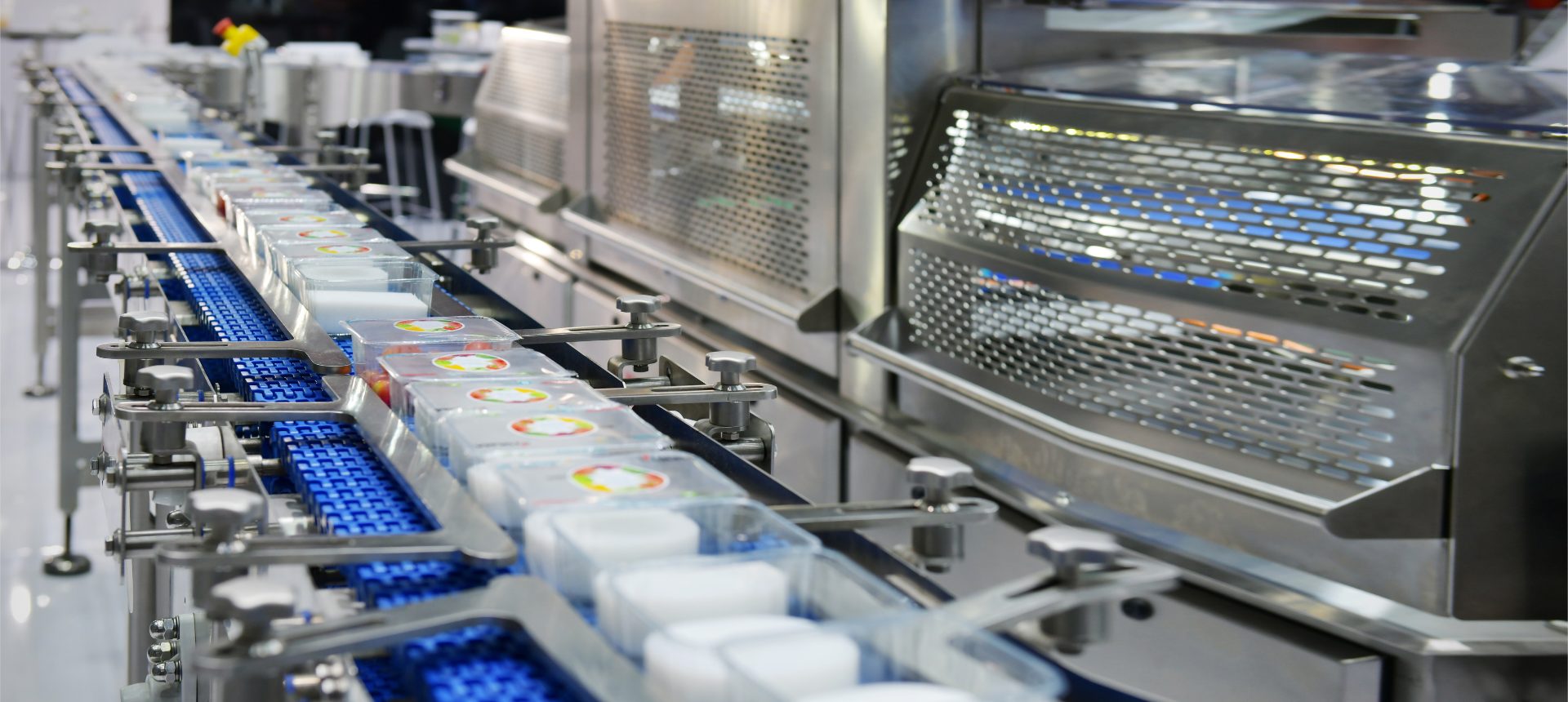Four Industry Trends (and one big challenge) for Food Manufacturers
With products that can be easily damaged, especially while in transit, food manufacturers are looking for ways to make their operations more efficient and sustainable. Here are four key industry trends for the food packaging and processing industry, as reported by the Packaging Machinery Manufacturers Institute.
Trend #1: A focus on automation and robotics
To achieve a production process that can react to retail changes in real time, food manufacturers need machines that are flexible and agile, citing automation and robotics as their top operational improvements wish list items:
- Installing automation = 52%
- Deploying more robotics = 40%
- Cost savings per package = 34%
- Introducing overall equipment efficiency (OEE) = 32%
- Increasing throughput = 23%
Key takeaways:
- More than half of manufacturers are turning to automation to fill the gaps left by a smaller workforce.
- Two out of five companies plan to use more robotics in the future.
Trend #2: Machines that provide easier changeovers
With the popularity of single-use products, many manufacturers are exploring convenience packaging such as pouches and cups. As a result, changeovers are vital. A majority of manufacturers want their machines to provide flexible changeovers. Other desired machine functionalities include faster processing speeds, energy efficiencies, robotic control, self-diagnostics and more intuitive operations.
Key takeaways:
- 70% of food manufacturers want machines that provide faster, more flexible changeovers.
- 40% want easier cleanability.
- 36% want improved operator safety features.
Trend #3: Ability to accommodate increasing SKUs
With the growth of e-commerce, long runs are a thing of the past. Increasing SKUs are being driven by factors such as artisanal flavors, seasonal products, smaller pack counts, organic labeling, ingredient reformulations, premium products, private label brands and customization requests.
More SKUs = more work
Due to different product sizes and flavors, additional SKUs impact every aspect of the line, creating more work and requiring more frequent changeovers. For some manufacturers, this may mean extending or adding to their line. Increasing SKUs also requires more time to clean the line, which equals more downtime. To help shorten changeover time, manufacturers seek to use automation; some are using robotic palletizers and case packers to keep up with the increased demand.
Key takeaways:
- 67% of manufacturers have seen their SKUs increase.
- Capacity issues can cause a greater need for outsourcing to contract packagers.
Trend #4: Integrated technology
While some food manufacturers are dealing with aging equipment, many packaging and processing lines are advancing the use of integrated technology. In fact, all new equipment is equipped with data collection connectivity. Using the Industrial Internet of Things (IIoT) and data collection allows manufacturers to better plan for production schedules, resources, labor and maintenance.
Collecting data also has a host of other real-time benefits, including:
- Reviewing causes of downtime/lost time
- Optimizing waste
- Staying up to date on inventory
- Analyzing productivity trends
- Monitoring process rates
- Scheduling repairs
- Financial planning
Key takeaways:
- Two out of five large manufacturers operate fully integrated lines, while only 25% of small- and medium-sized companies are currently integrated.
- 64% are collecting real-time data to help reduce failures, increase output and improve batch tracking.
One universal challenge: Justifying the cost
When it comes to adding more automation and robotics, many manufacturers struggle to justify the cost with their return on investment. One big concern is the harsh washdown requirements for industry equipment, as well as limited expansion capabilities in older facilities and legacy lines. Another challenge is a workforce that may not have the necessary technical skills or training to run new equipment efficiently.
MGS can help you meet these challenges head on. Optimizing the use of automation and robotics — as well as integrating their lines — could help many food manufacturers see efficiencies throughout their operations, from production to packaging and beyond.
MGS has fielded thousands of food packaging machines around the globe. If we can assist you in optimizing your production, upholding quality and increasing throughput, contact us at info@mgsmachine.com or request more information below.
To read the whole report by PMMI, click https://www.pmmi.org/report/2019-trends-and-advances-food-packaging-and-processing
